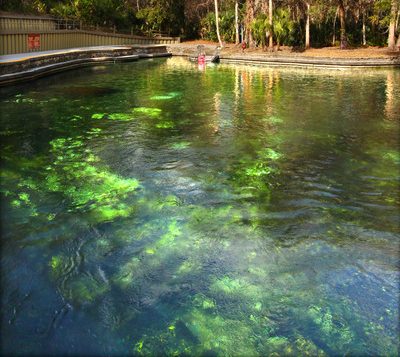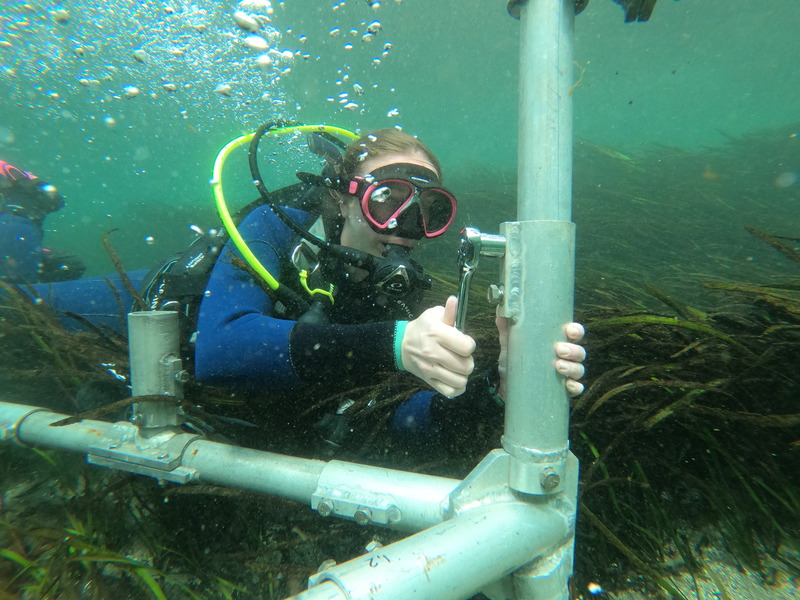The sway of plants caused by the flow of water resembles a dance to graduate student Katie Schoenberger, who is researching how this movement can affect the growth and removal of algae in Florida’s springs. Excessive algae growth in many of the state’s springs have rendered blue, pristine bodies of water green and coated in slime, reduced water quality and triggered fluctuations in the amount of oxygen in the water, which places stress on aquatic life.
“A lot of springs have become overrun or dominated by certain algae types, and so looking at different ways to manage algae is important,” said Schoenberger, a master’s student in environmental engineering sciences who is advised by David Kaplan, Ph.D., professor in environmental engineering sciences. “My research looks at what is influencing algae growth and removal, which can inform water management districts or state agencies that control for algae in these ecosystems.”

Schoenberger is collaborating with Xiao Yu, Ph.D., assistant professor in the University of Florida Department of Civil and Coastal Engineering, who is developing a new model to measure how the plant shape and movement of individual leaves against each other from water flow affect ecosystem processes like algae growth. Schoenberger’s field work for this project funded by the National Science Foundation (NSF) will validate the model’s simulations of vegetation motion and the speed and turbulence of the waters.
In the field, Schoenberger is joined by Patrick Norby and Jack Parker, field technicians at the Center for Coastal Solutions, Adam Hymel, a graduate student in environmental engineering sciences and Audrey Haynes, an undergraduate marine sciences student to record how fast the water flows as well as vegetation movement using GoPro cameras at several springs, including Ichetucknee Springs, Silver River, Rainbow River and Gum Slough. The team keeps an eye out for a specific type of movement called monami.

Similar to swaying, monami occurs when the plant blades move back and forth, but the movement is not random. Rather, plant blades shift a specific amount in each direction over a certain amount of time. Recent research has shown that this type of movement contributes to the removal of algae in springs.
“To our knowledge, this is the very first project to use video imagery to measure and quantify vegetation motion in nature rather than a lab setting,” said Schoenberger. “If this is successful, this could be helpful as artificial intelligence and image tracking become more prevalent and scientists could use video imagery to track more than vegetation.”
Throughout the rest of the summer, Schoenberger will finish collecting data from the springs before she concludes her first field season and analyzes the videos for measurements.
“Watching how these plants move dramatically is interesting to the eye and important for environmental reasons,” said Schoenberger. “What surprised me is how strong they are when they’re swaying back and forth – they knock us side to side and they’re so dense that they completely surround us. For me, it reinforces the idea that vegetation motion has an effect on algae growth and removal.”
—
By Megan Sam
